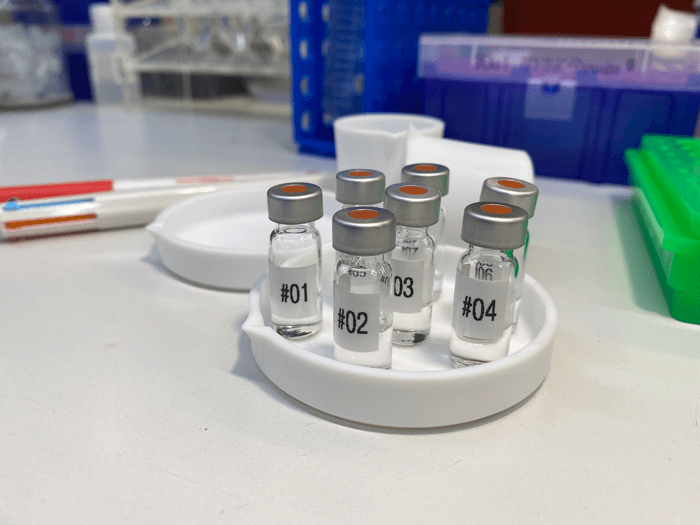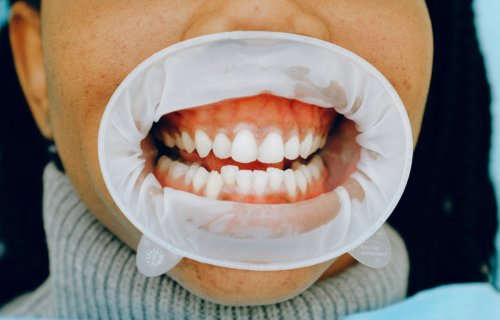NEW YORK — A dental gel for gum disease may provide a cure for the condition by protecting people from harmful inflammation in the mouth.
Researchers in New York say the topical therapy could potentially revolutionize treatment of a condition that affects almost half of adults over 30. It blocks the receptor for a metabolic byproduct called succinate — changing the makeup of mouth bacteria.
“No current treatment for gum disease simultaneously reduces inflammation, limits disruption to the oral microbiome, and prevents bone loss. There is an urgent public health need for more targeted and effective treatments for this common disease,” says study co-first author Yuqi Guo, an associate research scientist in the Department of Molecular Pathobiology at NYU Dentistry, in a media release.

Why is gum disease so difficult to cure?
Gum disease is the result of germs and bacteria attacking tissue. Teeth become loose and prone to abscesses, possibly leading to tooth loss.
In many patients, the infection is so deeply lodged that the patients can’t clean it out by brushing or using mouthwash on their own. Uncontrolled, gum disease can lead to painful and bleeding gums and difficulty chewing.
The new gel has been tested on mice, human cells, and plaque samples cultured in a lab. It lays the groundwork for a non-invasive therapy people could apply at home to prevent or treat gum disease.
Previous studies have linked succinate to gum disease and inflammation. Five years ago, the same team discovered elevated levels stimulate bone loss. Study authors hope targeting this link will stop the condition, which dentists call periodontitis.
Analysis found higher levels in dental plaque and blood samples from humans and mice with gum disease, respectively.
Beating gum disease at a genetic level
The New York University team also discovered that the succinate receptor gene was expressed. Knocking it out in genetically engineered lab rodents reduced gum inflammation and bone loss.
They also found different bacteria in their mouths. Mice with gum disease had a greater imbalance of succinate than their peers with the gene “knocked out.”
Extra succinate worsened gum disease in normal mice, but the genetically-engineered group were protected against inflammation, increases in unhealthy bacteria, and bone loss.
“Mice without active succinate receptors were more resilient to disease,” adds co-author Fangxi Xu, an assistant research scientist at NYU Dentistry. “While we already knew that there was some connection between succinate and gum disease, we now have stronger evidence that elevated succinate and the succinate receptor are major drivers of the disease.”
What’s in the new gel?
The gel formulation contains a small compound that attacks the succinate protein and prevents it from activating. Experiments on human gum cells found it reduced inflammation and processes that lead to bone loss.
Applied as a topical gel to mice with gum disease, it dampened local and systemic inflammation and bone loss in a matter of days. Treatment every other day for four weeks cut bone loss in half compared to peers who did not receive the gel.
It also significantly changed the community of bacteria in their mouths. Notably, the gel depleted levels of the Bacteroidetes family – which include pathogens dominant in gum disease.
“We conducted additional tests to see if the compound itself acted as an antibiotic, and found that it does not directly affect the growth of bacteria. This suggests that the gel changes the community of bacteria through regulating inflammation,” says co-senior author Deepak Saxena, professor of molecular pathobiology at NYU Dentistry.
New hope to avoid painful dental work
Currently, dentists can clean infected areas but the tissue is often so damaged by the time it begins healing, new infections start to set in. Accelerating healing could cure the chronic and recurrent disease.
Further animal tests are underway to identify the right dosage – and any possible toxicity – before any human trials can begin. The ultimate goal is a gel and oral strip that people can use at home to reverse or prevent gum disease.
Dentists hope they will even be able to apply a stronger, slow-release formulation to germ pockets that form in the gums.
“Current treatments for severe gum disease can be invasive and painful. In the case of antibiotics, which may help temporarily, they kill both good and bad bacteria, disrupting the oral microbiome. This new compound that blocks the succinate receptor has clear therapeutic value for treating gum disease using more targeted and convenient processes,” concludes Xin Li, professor of molecular pathobiology at NYU Dentistry.
The study is published in the journal Cell Reports.
South West News Service writer Mark Waghorn contributed to this report.
